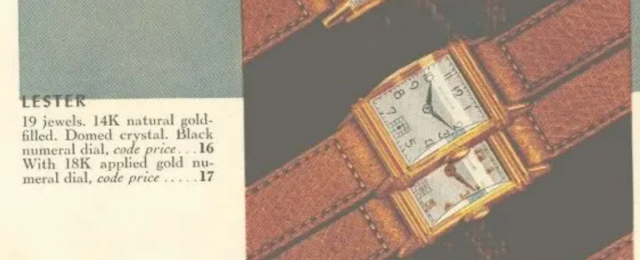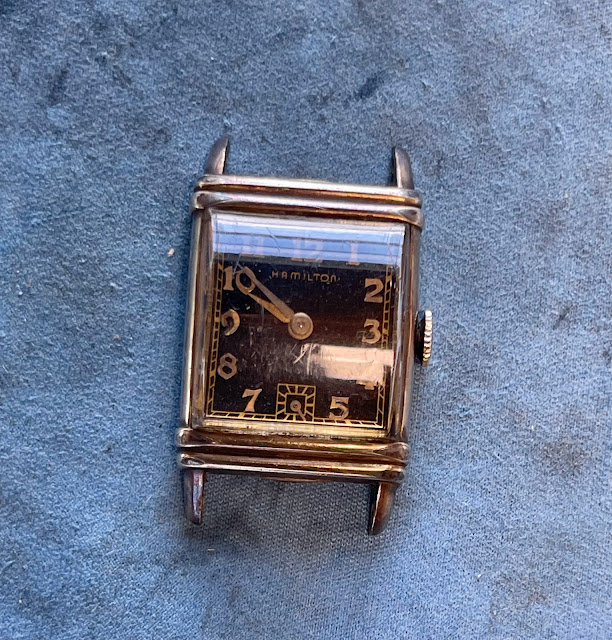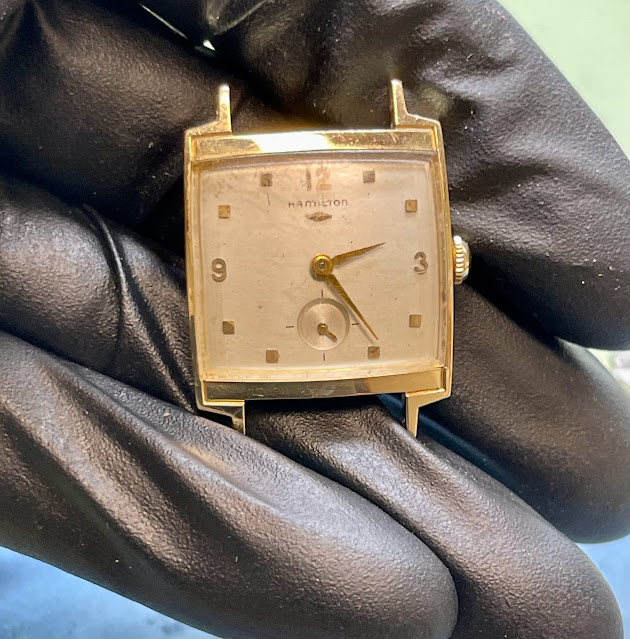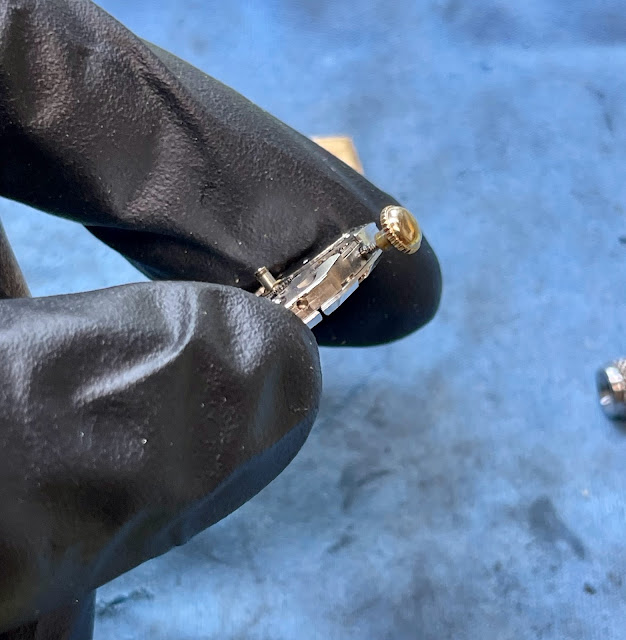Every now and then I get the opportunity to work on something unusual and even though I've showcased my most recent project before on the blog, I figured it's worth showing another one.
This watch is a one-year-wonder - the 1965 Accumatic A-504. It has the unique distinction of being one of the few mechanical asymmetric models and the last model to be produced. It also shares a case with one of the Electric models - the Regulus, which was also a one-year wonder from six years earlier - 1959.
The A-504 is a popular model and will typically sell for $1,500 or more. It's definitely a conversation piece and you're sure to be the only one in the room wearing one - even among Hamilton collectors.
My project watch is some serious need of TLC. The crystal almost looks like it was melted. The crown is missing. I suspect I could send the dust inside to the FBI and get a DNA match to the original owner. Amazingly the movement still ticks when the case is moved around.
The back of the case has a lip and it will almost always present with case knife marks but this case has been soldered closed at the factory and it opens through the crystal. The 1959 Electric Regulus model used this design as a two-piece case but it was difficult to seal so Hamilton decided to solder it watertight for the A-504.
With the crystal out of the way you can see the dial is equally dirty. I'll try to gently remove the crud without compromising the dial finish or printing. There's only so much magic I can do though, as there's a very fine threshold between "kinda clean" and "oops".
Without a crystal or a crown, the movement will just flop out of the case when I point it dial down.
There must have been an issue with the original rotor as this watch has a generic ETA rotor replacement. I can see some brass showing along the circumference of the framework so the original must have been dragging.
There is no movement ring inside the case, the dial and main plate just support the movement inside the case back.
While everything is being cleaned in the ultrasonic I will turn my attention to reluming the hands.
Although this watch was produced in 1965, well into the timeframe of the 689A, the few A-504's that I have seen have used a 689. The main difference is the framework that supports the rotor for a 689A has a cutout so the balance is accessible. The 689 framework does not have a cutout. Since the framework that came with the watch was rubbing, I will swap it out with the 689A.
Everything is cleaned and ready to reassembled. The dial cleaned up fine - or at least as good as I hoped it would. It's by no means "new" but it looks totally authentic.
The basic movement is assembled and running with a good motion. Now it's off to the timer to see what it thinks.
Not too shabby... I'll speed it up a smidgen but it's running great overall as-is.
With the automatic bits installed, this movement now looks like your factory fresh 689A. Notice you can see the balance assembly, in case any adjustments are necessary. Compare the photo below with the earlier photo above and you can see the improvement of a 689A over the original.
Since this watch is a "front loader" it requires a two-piece stem. The male side is the "hub" and is threaded into the crown. You need to get it to a very precise length so the crown will seat properly. I ended up replacing both sides of the two-piece stem as the female part was too worn to hold the hub.
With a new crystal, crown, and a nice genuine lizard strap, the finished project looks fantastic and it runs as great as it looks.


























































